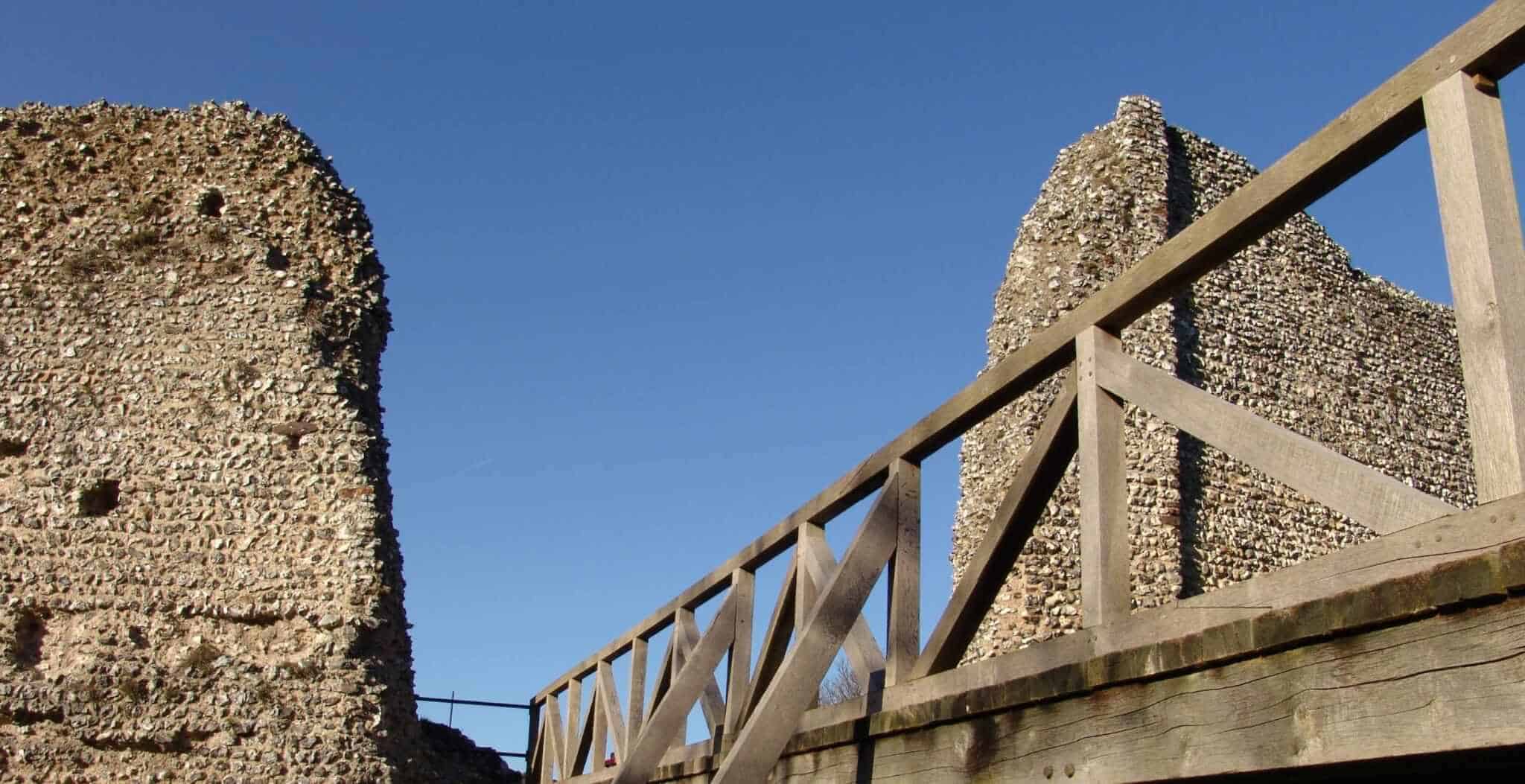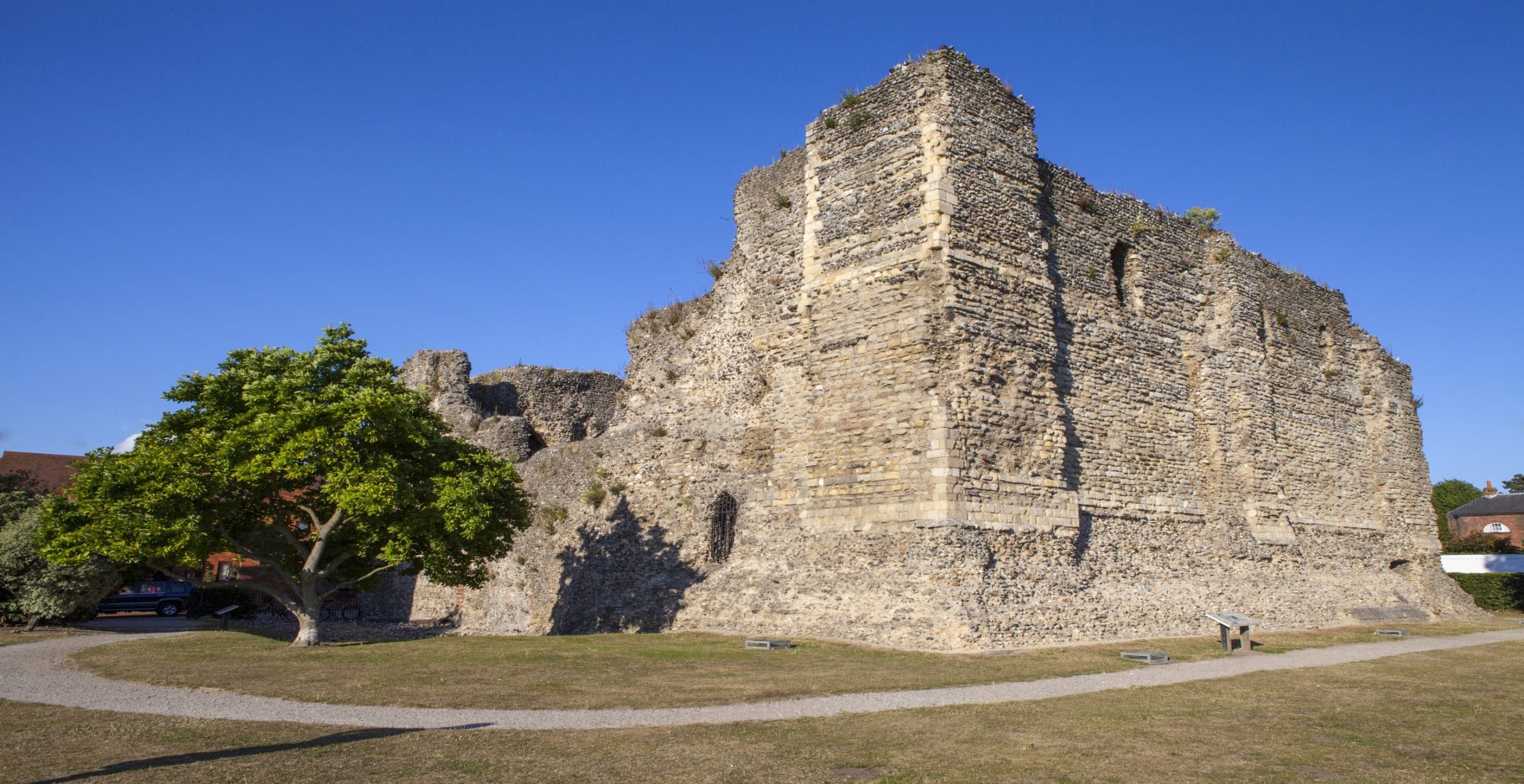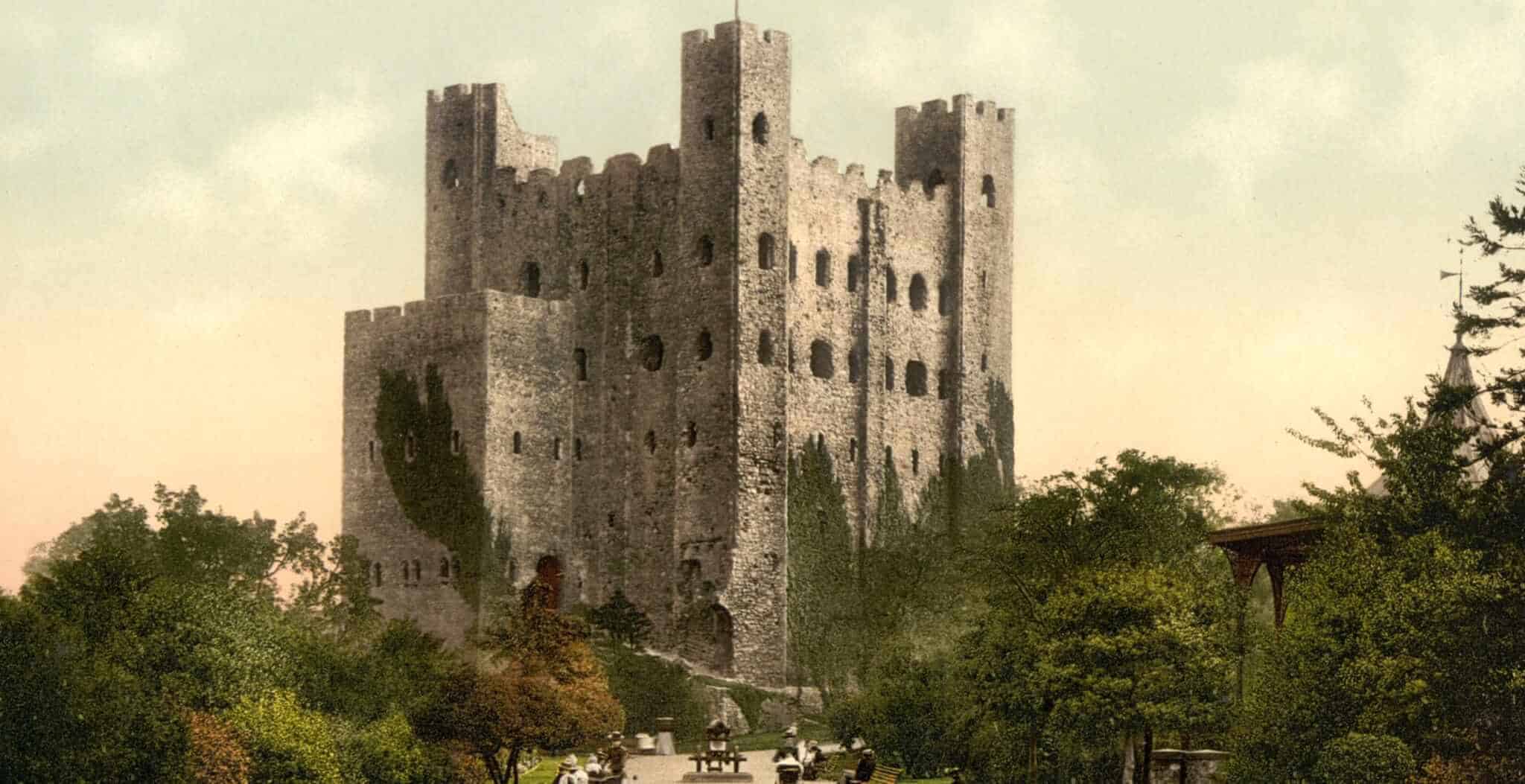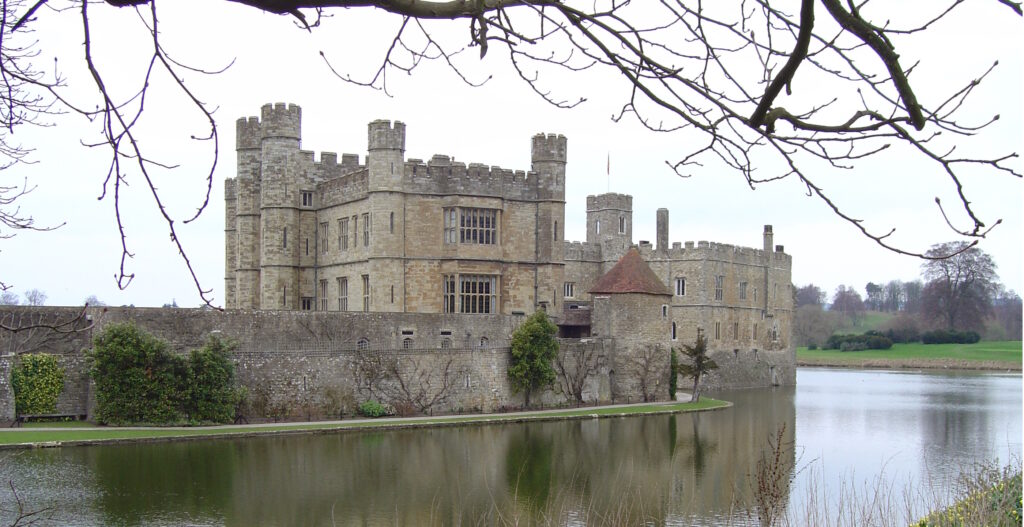Eynsford Castle is a rare survival of an early Norman castle, unaltered by later building works. Its location close to London also makes it a great venue for anyone looking for a day trip out from the capital!
The castle itself was constructed on the site of an earlier Saxon building and began with the building of an impressive curtain wall between 1085 – 87. The first owner of Eynsford Castle was William de Eynsford I, a knight and sheriff of Kent.
By the late 11th or early 12th century the castle had gone through a fairly rapid expansion, with additional defences being added and buildings erected within the curtain walls.
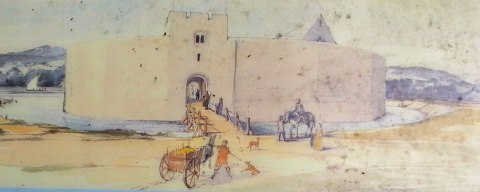
The most impressive part of these 11th century additions was undoubtedly the Great Hall. The ground floor of the structure (which can still be seen today) was used mainly for storage, although it would have also included accommodation for the bailiff of the castle. On the first floor would have been the main hall and the accommodation for the lord of the castle.
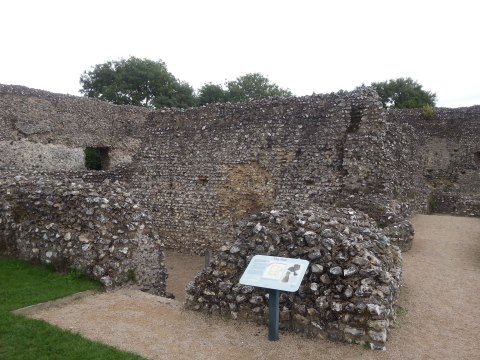
In 1261 Eynsford Castle and the adjoining estate were divided between the Kirkeby and Criol families, causing much dispute. The conflict reached a climax in 1312 when Nicholas de Criol and his supporters broke in and vandalised the castle in protest. Eynsford Castle was abandoned shortly afterwards.
Eventually the castle passed into the ownership of the Hart Dyke family (who also owned nearby Lullington Castle) and by the mid-18th century Eynsford was being used as stables and kennels for hunting hounds.
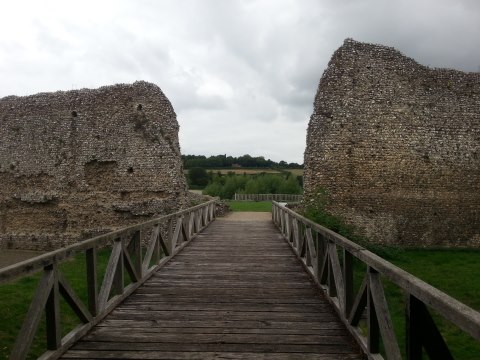
Today the castle still lies in ruins, although the original curtain walls stand to an impressive 30 feet high in places. The site is managed by English Heritage as a Scheduled Ancient Monument, and public access is completely free during daytime hours.
Update : For a full list of English castles, be sure to check out our brand new interactive map here.
